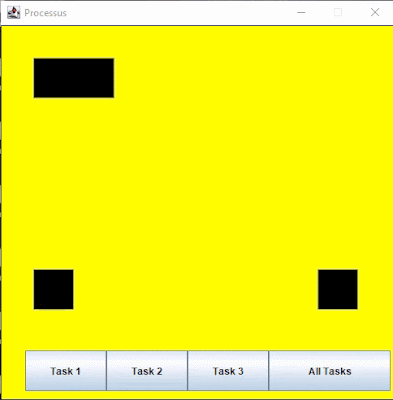Any application can have multiple processes (instances). Each of this process can be assigned either as a single thread or multiple threads.
This is an animated example for a deep understanding:
What is Single Thread?
Single threaded processes contain the execution of instructions in a single sequence. In other words, one command is processes at a time.
Example:
What is Multithreading in Java?
The opposite of single threaded processes are multithreaded processes. These processes allow the execution of multiple parts of a program at the same time.This is an animated example for a deep understanding:
Its source code:
- Enhanced performance by decreased development time
- Simplified and streamlined program coding
- Improvised GUI responsiveness
- Simultaneous and parallelized occurrence of tasks
- Better use of cache storage by utilization of resources
- Decreased cost of maintenance
- Better use of CPU resource
Disadvantages of Multithreaded Processes:
- Complex debugging and testing processes
- Overhead switching of context
- Increased potential for deadlock occurrence
- Increased difficulty level in writing a program
- Unpredictable results







0 Comments